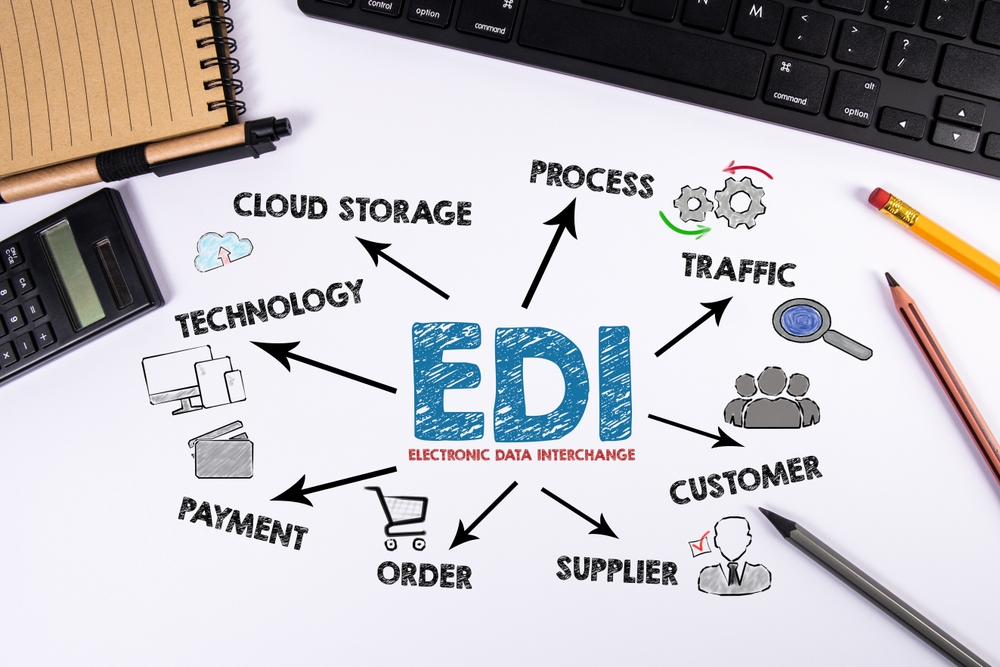How to Integrate EDI Systems for Seamless Cross-Border Logistics
Effective cross-border logistics requires the smooth exchange of data between various stakeholders—suppliers, carriers, customs, and more. As businesses aim to increase efficiency, reduce costs, and enhance customer satisfaction, integrating an Electronic Data Interchange (EDI) system into cross-border logistics operations has become a key factor for success.
EDI enables automated, secure, and standardized exchange of important logistics documents, ensuring compliance and efficiency in international trade. This blog will walk you through the importance of EDI in cross-border logistics and provide a step-by-step approach to integrating EDI systems into your business operations.
Why EDI is Essential for Cross-Border Logistics
What is EDI?
Electronic Data Interchange (EDI) is the computer-to-computer exchange of business documents in a standardized electronic format. By using EDI, businesses can send documents such as invoices, purchase orders, shipping manifests, and customs declarations between systems without manual intervention. For cross-border logistics, EDI provides a streamlined way to communicate with various partners quickly and efficiently, which is crucial for managing international shipments.
Benefits of EDI in Cross-Border Logistics
- Speed and Efficiency: EDI automates data transfer, making the process of sharing key logistics documents faster and more accurate. The reduced reliance on manual data entry means fewer errors and delays in cross-border processes.
- Regulatory Compliance and Traceability: International shipments require adherence to customs and trade regulations, which vary by country. EDI streamlines compliance with these regulations by enabling quick and accurate transfer of documents, such as customs forms and certificates of origin.
- Cost Savings: Reduced paperwork, fewer manual processes, and better inventory management help to cut costs. EDI minimizes errors that may lead to fines, penalties, or costly reshipments.
- Improved Visibility and Collaboration: EDI allows for better tracking of shipments and collaboration between partners. Real-time data on orders, inventory, and shipment status ensures everyone in the supply chain is informed.
Steps to Successfully Integrate EDI Systems for Cross-Border Logistics
Integrating EDI into cross-border logistics is a strategic process that involves the selection of the right tools, ensuring compatibility with existing systems, and seamless collaboration with trading partners. Here are the key steps to follow:
1. Evaluate Your Business Requirements and Current Systems
Start by identifying your needs for EDI integration. Analyze your current logistics processes and identify pain points, inefficiencies, and opportunities for automation.
Identify Key EDI Documents: Understand the specific types of EDI transactions that will be most relevant for your business. Typical EDI documents for cross-border logistics include:
- Purchase Orders (850): To manage order information.
- Invoices (810): For payment processing.
- Advance Ship Notices (856): For providing shipping details and timelines.
- Customs Documents (e.g., 309, 315): For import/export compliance and clearance.
- Transportation Status Updates (214): To track shipment and carrier status.
Analyze System Compatibility: Assess the compatibility of your current logistics, ERP (Enterprise Resource Planning), and TMS (Transportation Management Systems) with potential EDI solutions. Your systems need to support EDI transactions to enable seamless integration.
Understand Your Trading Partners’ Needs: Each partner may have different EDI standards and formats, especially across international borders. Determine the standards that are required (e.g., ANSI X12 in North America, EDIFACT in Europe and other regions) to ensure smooth communication with each partner.
2. Choose the Right EDI Solution
EDI comes in different types and models, and it’s important to choose one that fits your business size, budget, and requirements.
EDI Integration Options
Direct EDI (Point-to-Point): This type involves a direct connection between you and your trading partners. It’s highly secure but can be complex to set up and manage, making it suitable for companies with a few key partners and high transaction volumes.
EDI via VAN (Value-Added Network): A VAN is a third-party service that acts as an intermediary for exchanging EDI documents. It is more flexible than a direct connection, offering services such as data translation, added security, and scalability, and it is suitable for businesses working with multiple trading partners.
Web-Based EDI: Ideal for smaller businesses or those with fewer resources, web-based EDI allows for easy management of transactions via an online portal. While it’s easy to use and cost-effective, it may lack some of the advanced features found in other solutions.
Cloud-Based EDI: Cloud-based EDI is becoming increasingly popular because of its scalability, lower upfront costs, and easier integration with existing business systems. Cloud solutions are suitable for companies looking to future-proof their logistics processes and quickly adapt to market changes.
3. Ensure EDI System Compatibility and Integration
Your EDI system needs to work seamlessly with your internal software, including ERP, TMS, WMS (Warehouse Management Systems), and CRM (Customer Relationship Management) systems.
Data Mapping and Translation: One of the key components of EDI integration is data mapping—translating your internal data (e.g., order details, shipment info) into the standardized EDI format required by your partners. Tools known as EDI translators help convert these documents into a readable format, making it easier for partners to receive and process the information.
System Integration: Seamless integration between your EDI platform and your internal systems ensures that information is updated and shared in real-time. This integration allows for better data flow, whether for updating inventory levels, tracking orders, or managing customs documentation.
Automated Workflows: Ensure that your EDI system is set up to automate key processes such as sending purchase orders, updating shipping status, and generating invoices. Automation reduces manual intervention and keeps operations running smoothly.
4. Test and Validate the EDI Implementation
Before launching your EDI system for cross-border logistics, thorough testing and validation are necessary to ensure that data is accurately transmitted and received.
Internal Testing: Test your EDI setup internally to verify that the data is correctly formatted, mapped, and translated. Ensure that each document type (e.g., orders, invoices, shipping notices) is properly processed.
Partner Testing: Conduct testing with your trading partners to validate that the documents are being sent, received, and interpreted correctly. Verify that the data flow meets all requirements and complies with standards.
Perform a Pilot Test: Implement a pilot program for a specific product line or region before rolling out EDI across your entire cross-border logistics operations. This allows you to identify and resolve any issues in a controlled environment.
5. Go Live and Monitor Performance
Once testing is complete, you can fully integrate EDI into your cross-border logistics operations. However, ongoing monitoring and optimization are critical for long-term success.
Real-Time Monitoring: Use dashboards and analytics tools to monitor the performance of your EDI system. Track key metrics such as document transmission times, error rates, and transaction volumes.
Continuous Improvement: Regularly assess your EDI system for areas of improvement. Work with trading partners to enhance data accuracy, address any issues, and adjust workflows as needed to accommodate changes in logistics requirements or market demands.
Security and Compliance: Keep your EDI system up to date with the latest security protocols to protect sensitive data. Regularly review compliance standards, as international trade regulations can change over time.
Best Practices for Seamless Cross-Border EDI Integration
To ensure that your EDI integration is seamless and successful, consider these best practices:
- Standardize Data Across Systems: Use standardized EDI formats to ensure consistency across all documents and transactions.
- Build Strong Partner Relationships: Establish open communication with trading partners to address any issues, align on standards, and optimize data exchange.
- Leverage 3PL Expertise: If managing EDI integration in-house is overwhelming, partnering with a third-party logistics provider (3PL) like PiVAL can simplify the process. 3PLs often have established EDI networks, specialized knowledge, and scalable solutions to improve cross-border logistics.
- Ensure Data Security and Privacy: Use secure EDI transmission methods and data encryption to protect sensitive information.
Conclusion
Integrating EDI into your cross-border logistics is crucial for streamlining data exchange, enhancing accuracy, and ensuring compliance. By automating key logistics processes, EDI allows for faster shipments, reduced costs, and improved visibility across your supply chain. As you assess your needs, choose the right EDI solution, and integrate it with your current systems, you’ll unlock efficiencies that give your business a competitive edge in international trade.
Ready to optimize your cross-border logistics? Contact PiVAL today to get support integrating EDI into your operations and elevate your supply chain efficiency.
Stay Up-To-Date
There's always something new from PiVAL



Leave a Reply